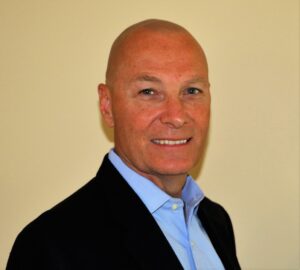By Steve Wightman

Steve Wightman of Polished Rock
Florida is among the riskiest places on the planet to insure property. Besides its natural pull to perils, it has become the center of the universe for innovating ways to drain insurers’ pockets. Innovative Claim Makers’ (third parties filing claims on behalf of policyholders) astonishing proficiency at deep-pocket-picking is not the real problem.
The real problem is the accelerating rate which Claim Makers are converting insurance consumers into being their customer. Clearly an insurance company’s formula to offer friendly service with an expeditious settlement check – and sincere best wishes with rebuilding – is not as attractive as what your adversaries are offering. So how exactly does a Claim Maker operate and how does it hurt the insurance consumer they advertise as helping?
Because of Hurricane Ida’s widespread destruction in Louisiana, there are millions of overwhelmed residents out of their homes, jobs, and businesses. Most of these people know virtually nothing about executing construction; especially unplanned construction in an apocalyptic environment.
Then, the knock on the door from a nice person that shares a rebuild-vision, recommends the homeowner seize a slot in the Claim Maker’s que, throws in some perks, and tells them the check the insurance company offered is not enough; but that can fixed! Sold.
It should not be such a surprise that Louisiana Assignment of Benefits (AOB) contractors (Florida still has contractors who continue to use AOB- type contracts with the same intent of assuming the consumer’s policy rights) have changed the landscape so rapidly. AOB contractors offer customers a turnkey answer to their problem of rebuilding that sounds better than “good luck.” It’s a huge emotional relief. Sirens to warn them about potential downsides of these relationships continue to sound, but not loud enough as a solution for the customer’s survival of the transaction.
Ironically, insurers start with all the advantages. They understand unplanned construction – it has been their obligation to understand future reconstruction events for centuries. Adjuster estimates include every excruciating detail down to the nail. Insurers are usually first to get the call from the customer. Drone imagery is available within hours to assess damage. The AOB contractor has some pretty significant disadvantages to convert insurers’ customers over to them, yet their success rate is accelerating.
Claim Makers saw an opportunity to develop innovative ways to turn a policyholder against their insurance company, take control and then hyper-amplify claims costs. Each year this segment becomes more legitimate to the supply chain. They will not stop innovating ways to steal customers and drive insurance premiums because most specialize in inflating claim costs.
I hope this article reminds insurance companies that they started and can maintain the customer relationship! Don’t let the forefathers’ definition of “demand surge” continue to drive unquestioned payout-panic. Insurance companies could rethink widespread losses as a single loss with many locations. Take inventory of the material and labor resources needed. Consider just how important modern technology is in the rebuild-world. Share the important demand-surge-defying assets to “take care of it” for insured customers showing them that their insurance company is loyal and will rebuild efficiently, much more efficiently than AOB contractors ever can.
Steve Wightman is CEO at Polished Rock. Steve has 30 years of experience studying the friction that each stakeholder involved with property losses experiences. The company consults to insurers and reinsurers to address reconstruction and supply chain friction following catastrophe. Wightman can be reached at [email protected]
LMA Newsletter of 10-4-21

